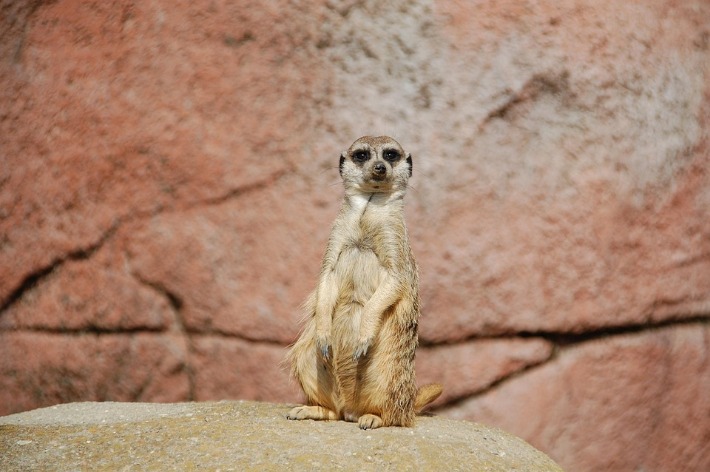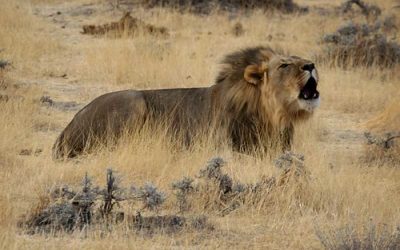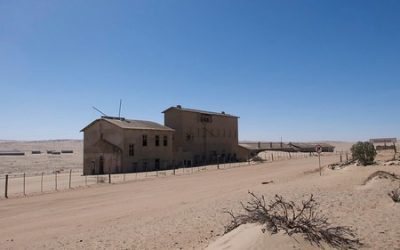Wildlife Diversity in Namibia
Namibia is renowned for its remarkable wildlife diversity, offering a sanctuary to a wide array of animal species. From vast savannahs and deserts to lush wetlands, the country’s varied landscapes support an impressive variety of fauna. Recognized for its conservation efforts, Namibia is home to iconic animals such as elephants, lions, cheetahs, and unique desert-adapted species, making it a premier destination for wildlife enthusiasts and researchers alike.
Unique Desert Adaptations
Namibia is renowned for its incredible wildlife diversity, particularly in its desert environments such as the Namib and Kalahari. The animals there have evolved remarkable adaptations to survive the extreme conditions of heat, scarce water, and limited vegetation. Many species exhibit unique traits that enable them to thrive in this harsh landscape. These adaptations highlight the resilience and ingenuity of Namibia’s fauna.
- Oryx (Gemsbok): Possesses specialized kidneys that conserve water and can raise its body temperature to avoid sweating, reducing water loss. Its reflective coat also helps it stay cool during the intense desert sun.
- Desert-adapted Elephants: These elephants travel great distances to find water and have developed the ability to dig water holes in dry riverbeds using their tusks.
- Namib Desert Beetle: Has a unique ability to collect moisture from fog on its bumpy back, channeling it down to its mouth, providing a vital water source in the arid environment.
- Fennec Fox: Features large ears that dissipate heat and aid in hearing prey underground, as well as a thick fur that insulates against the daytime heat.
- Springbok: Capable of making incredible jumps and fast sprints to escape predators, and conserves water by getting most of its hydration from the plants it eats.
Endangered Species
Namibia is renowned for its incredible wildlife diversity, hosting a wide variety of species adapted to its unique ecosystems. The country’s savannas, deserts, and wetlands provide habitats for numerous mammals, birds, reptiles, and insects, making it a significant destination for biodiversity enthusiasts. Many animals in Namibia are specially adapted to survive in harsh conditions, showcasing the resilience of nature.
However, several species face threats due to habitat loss, poaching, and climate change, leading to a number of them being classified as endangered. The desert-adapted elephants, black rhinoceros, and cheetahs are among the species at risk, emphasizing the need for conservation efforts. Namibia has implemented protected areas and conservation programs to safeguard its wildlife and ensure the survival of these remarkable animals for future generations.
Conservation Efforts
Namibia is renowned for its rich wildlife diversity, home to a wide variety of animals that thrive across its vast desert landscape and savannahs. The country hosts iconic species such as elephants, black rhinos, cheetahs, lions, and giraffes, many of which are unique to the region. These animals play a vital role in maintaining ecological balance and attract eco-tourists from around the world, contributing significantly to Namibia’s economy.
Conservation efforts in Namibia are highly regarded and include a combination of government initiatives, community involvement, and international partnerships. The country has established numerous national parks and protected areas, such as Etosha National Park and Namib-Naukluft Park, dedicated to preserving its wildlife. Community-based conservancies empower local communities to protect wildlife while benefiting financially from tourism and sustainable resource management. Anti-poaching measures and wildlife monitoring programs further reinforce Namibia’s commitment to conserving its animal populations. Through these ongoing efforts, Namibia aims to ensure that its unique animal species continue to thrive for future generations.
Iconic Animals of Namibia
Namibia is a land of remarkable wildlife, renowned for its diverse and iconic animals that inhabit its vast deserts, savannas, and national parks. These creatures have adapted uniquely to the challenging environment, making Namibia a premier destination for wildlife enthusiasts. From the majestic elephants to the elusive black rhinos, the country’s animals symbolize its rich biodiversity and natural heritage.
Desert-Adapted Elephants
Desert-adapted elephants are among the most iconic animals of Namibia, showcasing remarkable resilience and adaptability in one of the world’s harshest environments. These elephants have evolved unique survival strategies that allow them to thrive in the Namib Desert, which experiences extreme temperatures and scarce water sources. They are known for their impressive ability to travel long distances in search of water and food, often venturing into remote desert areas where few other large animals can survive.
Unlike typical elephants, desert-adapted elephants have smaller, more efficient ears that help regulate body temperature, and they are able to obtain moisture from the plants they consume, reducing their dependence on water sources. Their social structure remains similar to other elephant groups, with matriarchs leading their herds across the desert landscape. These magnificent creatures not only symbolize the resilience of life in Namibia but also draw significant interest from conservationists and tourists alike, helping to raise awareness about the importance of protecting Namibia’s unique desert ecosystems.
Oryx Antelope
The Oryx Antelope, also known as the gemsbok, is one of the most iconic animals of Namibia. Renowned for its striking appearance and impressive horns, the oryx is perfectly adapted to the harsh desert environment of the region. Its long, sharp horns can reach up to a meter in length and are used effectively for defense and dominance displays. The oryx’s coat features a beautiful combination of light tan and contrasting black markings on the face, legs, and body, providing both camouflage and heat reflection. As a symbol of resilience and strength, the Oryx Antelope is often associated with Namibia’s rich natural heritage and is a favorite among wildlife enthusiasts and photographers visiting the country’s national parks and reserves.
Black Rhino
The black rhinoceros is one of Namibia’s most iconic animals, symbolizing both the country’s rich biodiversity and its conservation efforts. This critically endangered species is known for its distinctive pointed lips, which are adapted for browsing on bushes and trees in the arid and semi-arid environments of Namibia. The black rhino plays a vital role in maintaining the health of the ecosystems it inhabits by shaping the vegetation and promoting new growth. Namibia has made significant strides in protecting the black rhino through strict anti-poaching measures and dedicated national parks such as Etosha and Namib-Naukluft. Visiting these areas offers a rare opportunity to see this majestic creature in its natural habitat and learn about ongoing conservation initiatives to ensure its survival for future generations.
Spotted Hyenas
Spotted hyenas are one of the iconic animals found in Namibia, renowned for their distinctive appearance and complex social behavior. These resilient predators are a vital part of the Namibian ecosystem and have become symbols of the wild landscape of the region.
- Spotted hyenas are easily recognizable by their muscular build, powerful jaws, and the characteristic spotted coat.
- They are primarily scavengers but are also skilled hunters, often working in groups to take down prey such as wildebeest and zebra.
- Hyenas live in large clans that can number up to 80 individuals, showcasing complex social structures and communication methods.
- Despite their reputation, hyenas play an essential role in maintaining the health of the ecosystem by removing carrion and controlling prey populations.
- In Namibia, these animals are often observed in places like the Etosha National Park, where their adaptability and hunting prowess are on full display.
Bird Species in Namibia

Namibia is home to a diverse array of bird species, making it a paradise for birdwatchers and nature enthusiasts. The country’s varied landscapes, from deserts and savannahs to wetlands and coastal areas, provide ideal habitats for numerous avian residents and migrants. Exploring the birdlife in Namibia reveals a fascinating variety of species, each contributing to the rich tapestry of its wildlife heritage.
Raptors and Raptors’ Habitats
Namibia is home to a diverse range of bird species, with a significant presence of raptors that play a crucial role in maintaining ecological balance. These birds of prey are adapted to various habitats across the country, including deserts, savannahs, and rocky outcrops. Among the most notable raptors found in Namibia are eagles, hawks, falcons, and vultures, each uniquely suited to their environment. The African Fish Eagle, for example, is frequently seen near water sources, while the Pale Chanting Goshawk inhabits open plains and semi-arid regions. Vultures such as the White-backed Vulture and Rüppell’s Griffon are commonly seen soaring overhead, scavenging for carrion. These raptors occupy habitats that range from the Namib Desert to the lush waterways of the Caprivi Strip, illustrating their adaptability and vital role in the ecosystem. Preserving these habitats ensures the survival of Namibia’s rich avian biodiversity and supports the complex food webs within these environments.
Migratory Bird Patterns
Namibia is home to a diverse array of bird species, making it a fascinating destination for bird enthusiasts. The country’s varied landscapes, including deserts, wetlands, and savannas, support numerous resident and migratory bird populations. Among the prominent species are the desert-adapted species like the Roan Antelope and the Namibian courtship displays of the Southern Carmine Bee-eater. Additionally, Namibia forms an essential stopover point on the migratory routes of many birds traveling between Africa and Eurasia. Migratory bird patterns in Namibia are largely influenced by seasonal changes, with many birds arriving during the winter months to escape colder regions further north. Species such as the Greater Flamingo, various species of storks, raptors, and waders flock to Namibia’s wetlands and coastal areas during migration periods, creating a vibrant spectacle. The country’s conservation efforts help protect these vital migratory corridors, ensuring the survival of numerous bird species and maintaining ecological balance across the region.
Endemic Bird Species
Namibia is home to a diverse range of bird species, including many endemics that are unique to this region. The country’s varied ecosystems, from deserts to savannas, provide ideal habitats for numerous avian species. Some of these birds are found exclusively within Namibia’s borders, making them particularly significant for conservation efforts.
- Rockhang (Namibia Rockhang) – An endemic bird species that thrives in rocky outcrops throughout Namibia.
- Hartlaub’s Francolin – Often found in dry shrublands and grasslands, this species is endemic to southern Namibia.
- Namibia Ostrich – Although widespread, it holds a significant population in Namibia, with some populations considered near-endemic.
- White-tailed Shrike – Restricted to specific arid and semi-arid habitats in Namibia, making it an endemic species.
- Sclater’s Francolin – An endemic species inhabiting the southern and central parts of Namibia’s scrublands.
Marine Life Along Namibia’s Coast
Namibia’s coastline is a vibrant and diverse habitat home to an array of marine life that captivates explorers and researchers alike. From colorful fish and playful seals to majestic whales, the waters along the Namibian coast support a rich ecosystem that reflects the region’s unique marine biodiversity. These animals play a vital role in maintaining the health and balance of the ocean environment, making Namibia a fascinating destination for marine enthusiasts.
Cape Fur Seals
Namibia’s coast is renowned for its rich marine biodiversity, with one of the most iconic species being the Cape Fur Seals. These seals are easily recognizable due to their thick, creamy fur and striking presence along the shoreline. They thrive in the cold Benguela Current, which provides an abundant supply of fish that supports their large colonies. The seal populations along Namibia’s coast often gather in large colonies, such as at the Cape Cross Seal Reserve, which hosts thousands of these fascinating animals. The Cape Fur Seals are highly social creatures, engaging in playful behaviors and complex communication within their groups. Their presence not only signifies health in the local marine ecosystem but also attracts numerous tourists, contributing to Namibia’s ecotourism industry. Conservation efforts continue to be crucial in protecting these animals from threats such as overfishing and climate change, ensuring that Namibia’s marine life remains vibrant for generations to come.
Dolphin Populations
Namibia’s coastline is a vibrant hub for marine life, featuring diverse ecosystems that support a wide range of species. Among these, dolphin populations are particularly notable, drawing interest from researchers and tourists alike. The cold Benguela Current along the Namibian coast provides ideal conditions for several dolphin species, including common dolphins, bottlenose dolphins, and striped dolphins. These intelligent mammals are often seen playing and hunting along the shoreline, contributing to the rich biodiversity of the region. Conservation efforts are underway to protect these populations from threats such as fishing entanglements and pollution, ensuring that Namibia’s marine life remains thriving for future generations.
Whale Watching Opportunities
Namibia’s coastline is a remarkable habitat for diverse marine life, offering unique opportunities for wildlife enthusiasts. The cold Benguela Current brings nutrient-rich waters, supporting an abundance of marine species such as seals, sea lions, and numerous fish varieties. Visitors to Namibia can observe these animals in their natural environment along the rugged shores and rocky outcrops.
Whale watching is one of the most popular activities along Namibia’s coast, especially between June and November when humpback whales migrate to breeding grounds. These majestic creatures often display impressive breaching and tail slapping, providing incredible spectacles for tourists. Southern right whales also frequent the waters, offering excellent opportunities for close-up views from designated viewing points or boat excursions.
Overall, Namibia’s marine ecosystem is a vital part of its natural heritage, giving travelers the chance to witness spectacular animal behaviors and enjoy a close connection with the ocean’s incredible biodiversity.
Reptiles and Amphibians
Reptiles and amphibians are fascinating groups of animals that thrive in Namibia’s diverse environments. From the rocky deserts to lush wetlands, these creatures have adapted uniquely to survive in harsh and variable conditions. Namibia’s rich biodiversity includes a wide variety of reptile and amphibian species, each playing an important role in the ecosystem. Exploring these animals offers insight into the remarkable ways life persists in one of Africa’s most striking landscapes.
Desert Lizards
Namibia is home to a fascinating variety of reptiles and amphibians, particularly notable for its desert-dwelling species such as desert lizards. These animals have adapted uniquely to survive in the harsh, arid environment of Namibian deserts. Desert lizards like the Namib sand gecko and the horned lizard are specially equipped with camouflage, specialized scales, and water conservation techniques to thrive where resources are scarce. Amphibians are less common in desert regions but can be found in more riparian habitats, showcasing the diversity of Namibia’s fauna. Overall, these animals illustrate the incredible adaptability of reptiles and amphibians to extreme environments, making Namibia a significant location for studying desert-adapted wildlife.
Namibian Toads
Namibian toads are fascinating amphibians that are native to the diverse landscapes of Namibia. These creatures play an essential role in the local ecosystem, helping to control insect populations and serving as prey for various predators. Adapted to the arid environment, many Namibian toads have developed unique features such as burrowing abilities and specialized skin that minimizes water loss, allowing them to survive in the harsh desert climate.
Venomous Snakes
Namibia is home to a diverse array of reptiles and amphibians, including some notable venomous snakes that have adapted to the arid desert environment. Among these, the black mamba and puff adder are well-known for their potent venom and are often found in Namibia’s savannas and rocky areas. These snakes play crucial roles in maintaining the ecological balance by controlling rodent populations. Amphibians, although less abundant in the dry regions, can be found near water sources such as rivers and wetlands, where species like the African bullfrog thrive. Understanding these animals is essential for conservation efforts and for ensuring human safety in regions where encounters may occur.
Key Conservation Areas
Key Conservation Areas in Namibia play a vital role in protecting the diverse array of animal species native to the region. These protected zones help preserve crucial habitats for wildlife such as elephants, cheetahs, and oryx, ensuring their survival amidst expanding human activities. By maintaining these areas, Namibia demonstrates its commitment to conservation and the sustainable management of its rich natural heritage.
Etosha National Park
Etosha National Park is one of Namibia’s most renowned conservation areas, famous for its diverse array of wildlife and critical ecological importance. It covers an expansive area of approximately 22,270 square kilometers and serves as a key habitat for numerous species of animals, including elephants, lions, rhinoceroses, cheetahs, and various antelopes. The park’s unique environment features the expansive Etosha Salt Pan, which becomes a lush water source during the rainy season, attracting large numbers of animals and supporting the complex food chains within the ecosystem. As a designated Key Conservation Area, Etosha plays a vital role in the protection of Namibia’s biodiversity, offering both sanctuary for its native species and opportunities for eco-tourism and scientific research. The park’s well-managed conservation efforts help ensure the survival of many endangered and rare species, making it a cornerstone of Namibia’s natural heritage and wildlife preservation initiatives.
Namib Desert Reserve
The Namib Desert Reserve is a vital Key Conservation Area in Namibia, home to a diverse array of wildlife uniquely adapted to the arid desert environment. Among the most iconic animals found here are the desert-adapted elephants, which have evolved to survive in one of the harshest climates, often roaming vast distances in search of water and food. Unlike their counterparts elsewhere, these elephants display remarkable resilience, often living in close proximity to human settlements while maintaining their natural behaviors.
Additionally, the reserve hosts a variety of other species such as oryx, springbok, and desert-adapted kudu, all of which have developed specialized adaptations to endure the extreme heat and scarcity of water. Predators like desert lions and cheetahs also inhabit the area, preying on smaller mammals and birds. Birdlife is abundant, with species like the sociable weaver and various raptors, which play important roles in the ecosystem. The unique flora and fauna of the Namib Desert Reserve highlight the incredible ability of Namibia’s animals to thrive in one of the world’s most extreme environments, emphasizing the importance of conserving this key area for future generations.
Pelican Point
Pelican Point is a significant Key Conservation Area in Namibia, renowned for its diverse bird species and marine life. It serves as a vital habitat for numerous animals, including various seabirds and marine mammals, making it an important site for conservation efforts.
- Pelican Point provides a breeding ground for the African penguin, a species that’s under threat and requires protection.
- The area is home to many other bird species, such as pink-backed pelicans, swift terns, and Cape cormorants.
- Marine mammals like Cape fur seals can often be seen congregating along the shores of Pelican Point.
- The surrounding waters are inhabited by fish and other marine creatures, supporting the local ecosystem.
- Conservation initiatives aim to preserve these animals and their habitats from human disturbance and environmental changes.
Cultural Significance of Animals in Namibia
Animals in Namibia hold a profound cultural significance, symbolizing spiritual beliefs, traditions, and social identities of various indigenous communities. These animals are often featured in folklore, rituals, and art, serving as a bridge between humans and nature. The diverse wildlife not only reflects Namibia’s rich ecological heritage but also embodies the deep-rooted values and stories that shape the cultural landscape of the nation.
San Bushmen and Their Wildlife Relationships
The San Bushmen of Namibia have a deep and intricate relationship with the wildlife that inhabits their environment, reflecting the cultural significance of animals in their traditions and daily life. For generations, animals such as elephants, lions, and oryx have played vital roles in San mythology, stories, and spiritual practices, symbolizing strength, wisdom, and resilience. The San people often hunt wildlife sustainably, viewing animals not only as a source of nourishment but also as sacred beings that embody important cultural values. Their respect for animals is evident in their rituals and artwork, where animals frequently feature in rock paintings and carvings, illustrating their deep connection and reverence for the natural world. This relationship underscores a harmonious coexistence, emphasizing conservation and the protection of Namibia’s unique biodiversity, which remains essential to maintaining San cultural heritage and ecological balance.
Traditional Uses of Wildlife
Animals in Namibia hold deep cultural significance and are integral to the traditions and beliefs of various indigenous communities. They are often regarded as sacred symbols, embodying qualities such as strength, wisdom, and connection to ancestral spirits. Many animals are featured in stories, rituals, and ceremonies that reinforce social values and cultural identity.
Traditional uses of wildlife in Namibia extend beyond spiritual symbolism; animals provide resources vital for daily life. For instance, certain species are hunted sustainably for meat, skins, and bones, which are utilized in making tools, ornaments, and ceremonial objects. Additionally, some communities use animal products in traditional medicine, believing they possess healing properties. These practices demonstrate a harmonious relationship between people and wildlife, emphasizing respect and sustainable utilization.
Wildlife in Local Folklore and Art
Animals in Namibia hold a profound cultural significance, deeply woven into the traditions, beliefs, and daily lives of its peoples. Many species, such as the oryx, desert-adapted elephants, and cheetahs, are not only symbols of the country’s rich biodiversity but also embody spiritual and cultural values. For example, some communities regard certain animals as messengers or totems that offer protection, guidance, or connection to ancestors. The keenness to preserve these animals reflects a respect for nature that is central to Namibian identity.
In local folklore, animals are often depicted as clever, mystical, or guiding beings that teach moral lessons or explain natural phenomena. Storytelling centers around animals like the springbok, oryx, and various predators, illustrating themes of resilience, wisdom, and harmony with nature. These stories serve as a means to pass down cultural knowledge and reinforce social norms across generations. Additionally, animals feature prominently in traditional dances, rituals, and ceremonies that celebrate the environment and reinforce community bonds.
The art of Namibia also showcases animals through intricate carvings, beadwork, and paintings that reflect their importance in daily life and spiritual beliefs. Artistic representations often emphasize the symbolic qualities of animals—such as strength, agility, or endurance—and are used in both aesthetic and ritual contexts. These works preserve cultural narratives and showcase the deep spiritual connection between Namibian communities and their native fauna. Overall, animals are integral to Namibia’s cultural heritage, embodying both the natural beauty and the spiritual essence of the land.





0 Comments